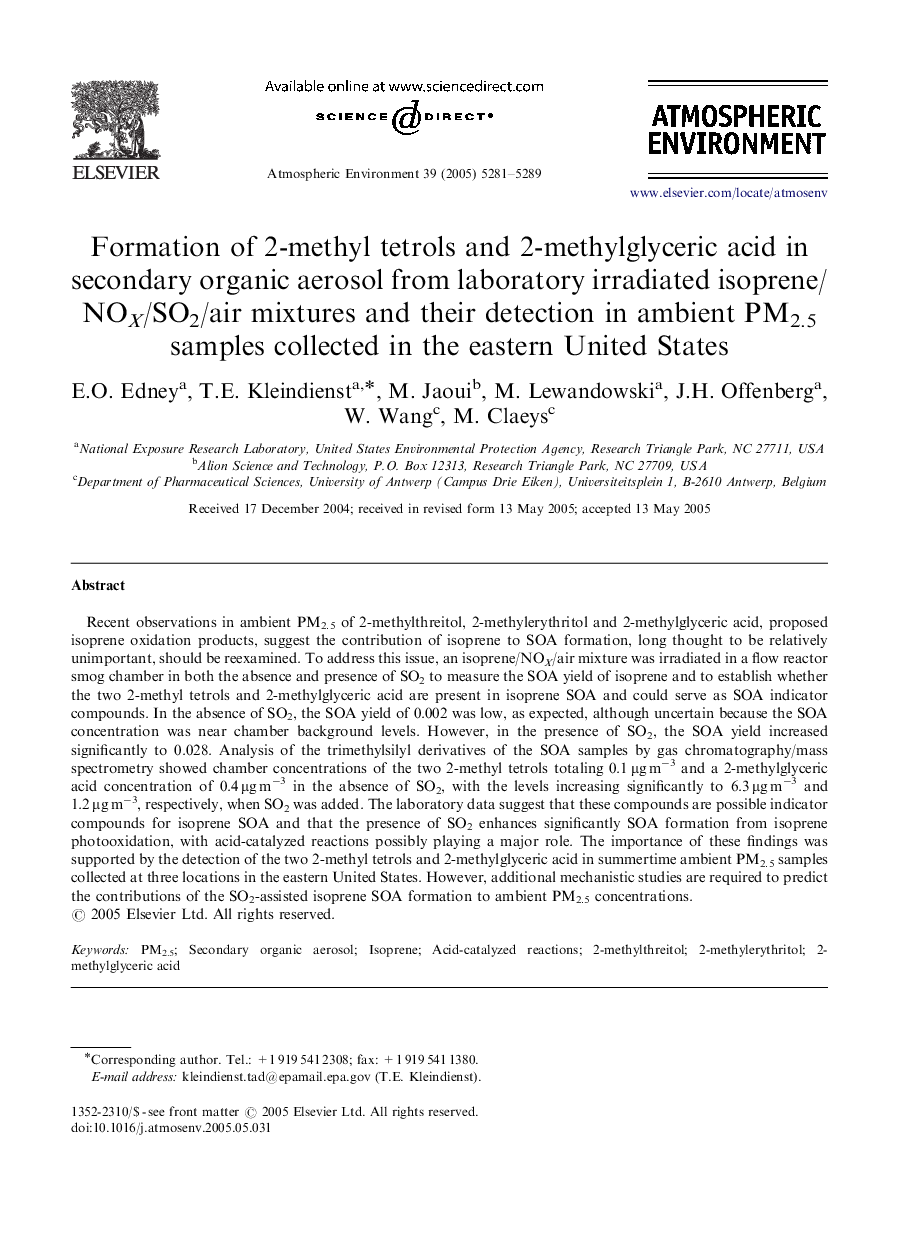| Article ID | Journal | Published Year | Pages | File Type |
|---|---|---|---|---|
| 4445184 | Atmospheric Environment | 2005 | 9 Pages |
Recent observations in ambient PM2.5 of 2-methylthreitol, 2-methylerythritol and 2-methylglyceric acid, proposed isoprene oxidation products, suggest the contribution of isoprene to SOA formation, long thought to be relatively unimportant, should be reexamined. To address this issue, an isoprene/NOX/air mixture was irradiated in a flow reactor smog chamber in both the absence and presence of SO2 to measure the SOA yield of isoprene and to establish whether the two 2-methyl tetrols and 2-methylglyceric acid are present in isoprene SOA and could serve as SOA indicator compounds. In the absence of SO2, the SOA yield of 0.002 was low, as expected, although uncertain because the SOA concentration was near chamber background levels. However, in the presence of SO2, the SOA yield increased significantly to 0.028. Analysis of the trimethylsilyl derivatives of the SOA samples by gas chromatography/mass spectrometry showed chamber concentrations of the two 2-methyl tetrols totaling 0.1 μg m−3 and a 2-methylglyceric acid concentration of 0.4 μg m−3 in the absence of SO2, with the levels increasing significantly to 6.3 μg m−3 and 1.2 μg m−3, respectively, when SO2 was added. The laboratory data suggest that these compounds are possible indicator compounds for isoprene SOA and that the presence of SO2 enhances significantly SOA formation from isoprene photooxidation, with acid-catalyzed reactions possibly playing a major role. The importance of these findings was supported by the detection of the two 2-methyl tetrols and 2-methylglyceric acid in summertime ambient PM2.5 samples collected at three locations in the eastern United States. However, additional mechanistic studies are required to predict the contributions of the SO2-assisted isoprene SOA formation to ambient PM2.5 concentrations.
